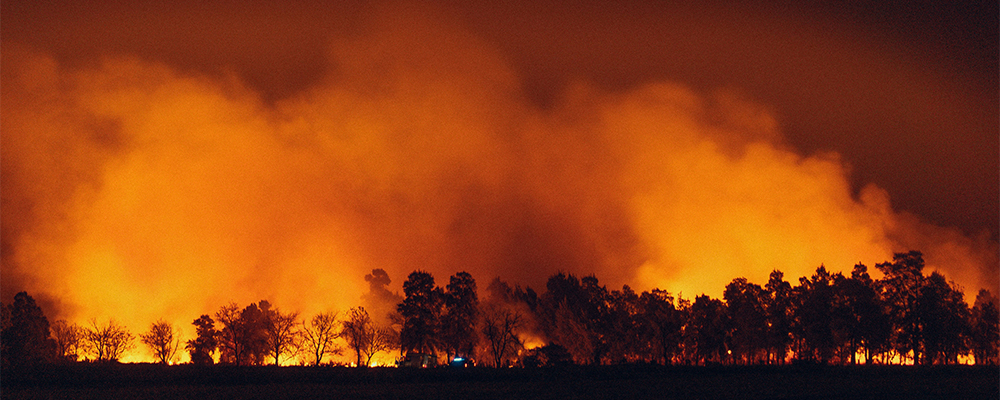


The Hidden Impact of Wildfires on Your Business
In recent months wildfires in California and the Carolinas have exacted a significant toll on residents, local business owners, and first responders. They have also brought to light very challenging issues around the impact of smoke and particulate matter.
As a business owner, you have dual responsibilities. You must consider the personal impact on your employees who are dealing with evacuations, property loss, and potential health issues. Secondly, there’s your business and the affect on the physical property. Aside from the potential of physical damage from fire, there is a hidden danger that is equally as critical: the indoor air your employees breathe.
During a wildfire, particulate matter can spread widely through air currents, for tens, hundreds, or even thousands of miles. The World Health Organization (WHO) classifies these particles as hazardous, with PM2.5 particulates small enough to bypass standard commercial filtration systems, damage sensitive equipment, and ultimately affect business productivity and profitability. This can add up to $15-$20 billion in lost productivity and health-related expenses, according to the National Bureau of Economic Research.
In fact, during wildfire events, indoor air quality in commercial spaces often measures worse than outdoor air without proper filtration due to limited air exchange and particle accumulation. According to the Centers for Disease Control (CDC), wildfire smoke exposure increases the risk of respiratory symptoms by 40%-60% in workplace populations.
What the Air Quality Index Means for Health and Well-Being.
The EPA's Air Quality Index (AQI) provides critical decision-making information:
The Technical Reality of Particulate Capture
PM2.5 particles are 30 times smaller than a human hair and can remain suspended indefinitely. For commercial operations, this creates specific challenges and requires upgraded air filtration solutions.
A MERV 13 air filtration system provides:
Standard MERV 8 filters deliver significantly less protection, resulting in:
The proof is in the numbers. Facilities with advanced air filtration systems report a 40-50% reduction in wildfire-related productivity losses and a 15-20% decrease in healthcare-related employee absenteeism (Source: Occupational Safety and Health Administration (OSHA) Workplace Health Report, 2023)
Commercial Building Defense Strategy: Effective Filtration
For Facilities Near Active Fires:
For Facilities in Wildfire-Prone Regions:
When Standard Solutions Aren't Enough
During severe wildfire events with PM2.5 concentrations of 300-500 μg/m³, even 80% filtration efficiency may leave indoor levels above regulatory thresholds. Consider these approaches:
1. Higher-efficiency filtration systems (where system capacity allows).
2. Standalone purification units in critical areas.
3. Modified outdoor air intake strategies.
4. Departmental rotation schedules.
5. Remote work options where feasible.
6. Real-time air quality monitoring systems.
The Business Case for Air Quality Investment
The financial implications of poor indoor air quality extend beyond immediate health concerns:
Bottom Line for Decision-Makers
Facilities need comprehensive air quality management at all times, especially during wildfire season. While external conditions can’t be controlled, human and capital assets can be protected through strategic air filtration solutions.
Start with MERV 13 filtration, implement monitoring with resources like airnow.gov, and deploy supplemental purification for critical areas. These investments protect productivity, equipment, and compliance while demonstrating your commitment to occupant health and safety.
As a global leader in air filtration solutions, American Air Filter has the expertise and products to help protect your facility during wildfire events. Contact an AAF representative to discuss the best filtration strategy for your facility needs.